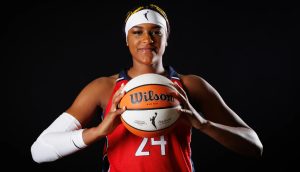This article appears as “Media’s New Seat at the Table” in the June 2017 issue of strategy.
This spring and summer, Media in Canada and its sister publication strategy magazine have embarked on a series of invite-only roundtable discussions, inviting some of the most influential voices in media to dive into the most pressing industry issues. In part two of our conversation with senior-level executives, we dig into the nitty gritty — how compensation is changing, why it’s easier to try new things and what needs to shift in the pitch process (read part one here).
Seated at the table were Harvey Carroll, CEO at IPG Mediabrands Canada, Sheri Metcalfe, SVP and co-managing director at Jungle Media and Ann Stewart, CEO at Maxus Canada, along with marketer-side partners Heather Loosemore, senior director of marketing communications at Walmart Canada and Melissa Williams, senior director of media at CIBC.
How is the industry’s fee structure changing?
Carroll: There’s a real push to drive people to pay for performance from a compensation standpoint. The notion of that is very engaging for clients. But trying to operationalize that is incredibly challenging. Because, understandably, client-side people need cost certainty. We’ll put a big chunk of what we make at risk, but we want you to do the same.
What I will say is that compensation models around performance force you to sit down with your client and really understand the important KPIs. What are the metrics? How are we measured? So even if it’s a small part of the fee, I think it makes sense.
We are trying to move to that space, because a lot of models just don’t make sense. I shouldn’t make more money if I help you spend more money. That just doesn’t seem logical. Yet, still, it’s a big part of how many agency agreements are structured.
Metcalfe: To me, commission is risky but you’re absolutely right – if I get paid based on what I’m recommending to you, isn’t that a bigger conflict of interest? And it might be a PR solution or a CRM solution, but potentially someone could hold back because they want to recommend traditional media or digital media as a better way to make money.
What’s the most important credential for a media agency today?
Carroll: We’re seeing clients look for pragmatism, simplicity. Like, enough with the fancy slideshows and all the stuff that you can do. They just want us to tell them what we can do and how we can help them drive business results.
There is a sexiness coming back to simply being heavy-lifting. And I think, as the agency community, we’ve done ourselves a disservice for a long time. I think in data and tech, clients will say, ‘Somebody showed us this attribution model and it’s 99.6% accurate.’ I hear this and I’m like that just can’t be true. But we do it too, right?
We get out there and we make this flashy shit. And then, a client hires you and says I want to see it. And it’s like, ‘Wow, now I’ve got to pull this thing off.’
If it’s a thing you’re dreaming of in the future, portray it as that.
Stewart: You know, as traditional media planners, we show them 150 slides. And then we give them the beautiful idea at the end, which they never listen to because everyone’s walked out of the room.
Carroll: And then there are pitches that talk about your business, not the client’s business. Why do we have 80 credential slides and like six slides on their business? It feels like something we should tackle as an industry because we’re all stuck with the same thing.
What’s exciting about the changing environment?
Stewart: We’re finding more of our clients are actually saying it’s OK to fail. We have data, so that allows us the freedom and bravery to recommend and for clients to accept.
Carroll: In the digital world, latency is so much shorter and the cost to try things is so much lower. It’s not like spending 12 weeks to shoot a huge ad that cost a million dollars – you’re much less likely to risk that failure.
Metcalfe: CPG is a place where you get brand managers that have the power to say no – but not the power to say yes. And they’re also incredibly risk-averse in brand manager roles. Because, for them to move up to a director level, they have to succeed just a little bit. So that risk personally impacts them. It’s the CMO that’s brave, right? It’s the directors and the senior clients that are like, ‘Let’s do this.’ The day-to-day clients are having to kill stuff because it’s too risky.
Williams: Though, I think sometimes agencies have a hard time selling themselves. You may have five really awesome new things in a media plan. But a team is just not selling it. It’s important because part of your job is just be really great salespeople and be really excited to go with the plan that’s in front of you.




















